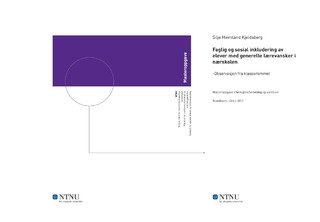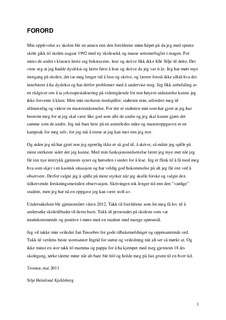| dc.description.abstract | The intention behind this study is to find out if learning disabled children who are physically included in a normal school are being included socially and academically. I wanted to investigate to what degree the students were included, and what happens to students who get a lot of education outside of the classroom. The political ideal in Norway is one where schools are a learning arena for all students, regardless of dysfunctions, and every student is to be included. Both the Law of Education and White Papers stress the importance of including every student in the lectures and the social aspects of school, but the closer one gets to the classroom, the less is said about what measures to take to include all the students.
I could only find one scientific article where the researcher had been in the classroom to observe what was being done. I also found national and international studies, where questionnaires where the most common method. I wanted to go more in dept on what happens in the classroom which includes or segregates students from the teaching. In order to do that, I chose to observe seven students, each for one week. For additional information, I interviewed the teacher closest to the students.
The paper is built up by one theoretical part and one empirical part. The theory consists of the sections of the Law of Education that concern students with general learning difficulties, previous research, the method I have chosen, and relevant theory on including. The empirical part consists of my findings from previous research on including students academically and socially, my observations and my interviews.
My most important finding was that for the student to be academically included, the entire team around the student has to work together. Good planning and cooperation ensures that the student is prepared for the lecture, and thereby able to understand the theme when the class discusses it. Good planning also gives the teachers a better understanding of how to assist the student. A student who is academically included also has a better chance of becoming socially included. One reason for this is that they learn social codes by participating in the normal lectures, which gives them the opportunity to become a natural part of the class.
To be socially included does not get the same priority as being academically included. Generally, it seems that academically and social including becomes more difficult the older the students get. Despite the political goals, it is not to be taken for given that students who are physically included in a school are included academically and socially. | nb_NO |

